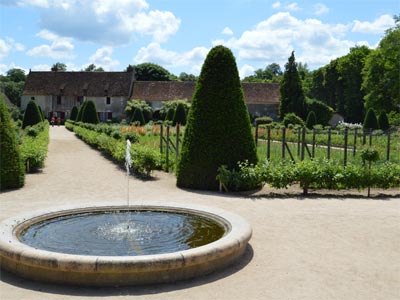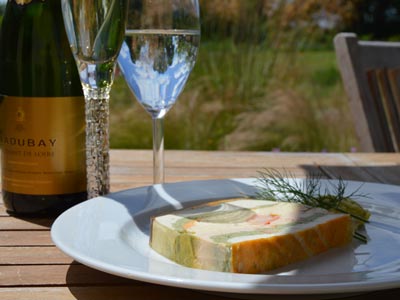Chateau de Chenonceau
Most glamorous of all the Loire Valley chateaux, with its galleries spanning the Cher, Chenonceau first appears in historical documents around the 11th century.
The Marques family, originally from Auvergne, was in possession of the chateau until the 15th century.
During the Hundred Years’ War, Jean Marques sided with the Burgundians rebels against the king and placed an English garrison in his castle. He was condemned as a traitor and a rebel and thrown into prison, where he died.
The fortifications of Chenonceau were laid level to the ground around 1411. His son, taking the lesson to heart, did homage to King Charles VII in 1431, and was allowed to re-fortify his chateau. Pierre Marques, the grandson of Jean Marques, inherited the estate and built a mill close by, on a pier, in the middle of the river Cher. Unfortunately, in 1513, due to financial difficulties, he had to sell it to one of his creditors – Thomas Bohier, General of Finance of Normandy, Chamberlain to King Charles VIII of France.
In 1535 the chateau was seized from Bohier’s oldest son Antoine Bohier, by King Francis I of France for unpaid debts to the Crown; after Francis’ death in 1547, Henry II offered the chateau as a gift to his mistress, Diane de Poitiers, who became fervently attached to the chateau.
Back in 1559, After King Henry II died, his strong-willed widow and regent Catherine de’ Medici forced Diane to exchange it for the Chateau Chaumont.
Chateau Chenonceau is listed as a historic monument since 1840 and it is the most visited castle in France after Versailles.
The Gardens of the Chateau de Chenonceau.
Following the fashion of of its times the Gardens of Chenonceau are isolated from the castle.
In 1555 Diane de Poitiers commissioned Philibert de l’Orme to build the arched bridge joining the chateau to its opposite bank. Diane then oversaw the planting of extensive flower and vegetable gardens along with a variety of fruit trees. Today this part of the garden is called “Jardin de Diane de Poitiers”.
It’s restoration, started in beginning of the 20th century by Henri Duchene, allows to rediscover the relation that it has with the river, an important and living element of the scenery.
After the death of King Henry II Queen Catherine de Medicis then made Chenonceau her own favourite residence, adding a new series of gardens, which initial realisation goes back to 1560, is baptised today “Jardin de Catherine de Medicis”.
A perspective drawing made by Androuet du Cerceau shows that there were also gardens on the other bank of Cher, perpendicularly to the river and to the bridge, which formed square and diamond-shaped beds, lined-up with trees.
Facing the garden of Catherine de Medicis on the north, there is a Jardin Vert, designed by Lord Seymour in 1825 for the countess Vallet de Villeneuve, who wished to have a english style park.










